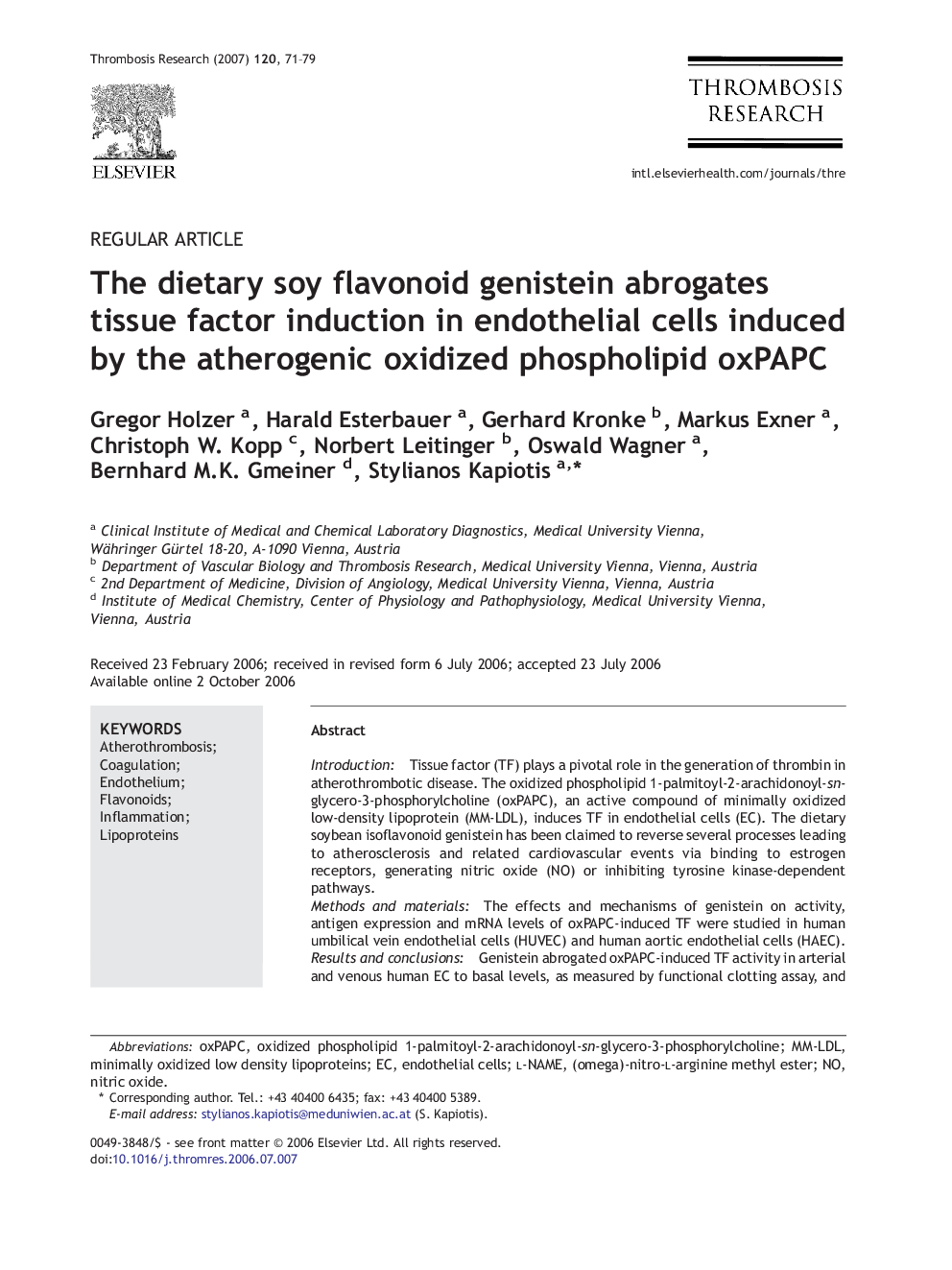| کد مقاله | کد نشریه | سال انتشار | مقاله انگلیسی | نسخه تمام متن |
|---|---|---|---|---|
| 3028467 | 1183014 | 2007 | 9 صفحه PDF | دانلود رایگان |

IntroductionTissue factor (TF) plays a pivotal role in the generation of thrombin in atherothrombotic disease. The oxidized phospholipid 1-palmitoyl-2-arachidonoyl-sn-glycero-3-phosphorylcholine (oxPAPC), an active compound of minimally oxidized low-density lipoprotein (MM-LDL), induces TF in endothelial cells (EC). The dietary soybean isoflavonoid genistein has been claimed to reverse several processes leading to atherosclerosis and related cardiovascular events via binding to estrogen receptors, generating nitric oxide (NO) or inhibiting tyrosine kinase-dependent pathways.Methods and materialsThe effects and mechanisms of genistein on activity, antigen expression and mRNA levels of oxPAPC-induced TF were studied in human umbilical vein endothelial cells (HUVEC) and human aortic endothelial cells (HAEC).Results and conclusionsGenistein abrogated oxPAPC-induced TF activity in arterial and venous human EC to basal levels, as measured by functional clotting assay, and downregulated oxPAPC-induced antigen expression measured by flow cytometry and mRNA levels quantified by real-time PCR. Western blotting and inhibitor experiments with the estrogen-receptor inhibitor ICI 182,780 and the NO-synthase inhibitor N(omega)-nitro-l-arginine methyl ester (l-NAME) showed that the effect may be mediated via inhibition of phosphorylation of ERK, but not upstream MEK1/2. The effect is not mediated by the tyrosine kinase inhibitor activity of genistein, as another tyrosine kinase inhibitor (tyrphostin 25) had no effect. Binding to the estrogen receptor or generation of NO are not involved in the action of genistein on TF. In conclusion genistein reduces oxPAPC-induced TF expression and thereby the prothrombotic phenotype of EC, further substantiating and explaining the beneficial effects of dietary genistein in preventing atherosclerosis and related cardiovascular events.
Journal: Thrombosis Research - Volume 120, Issue 1, 2007, Pages 71–79